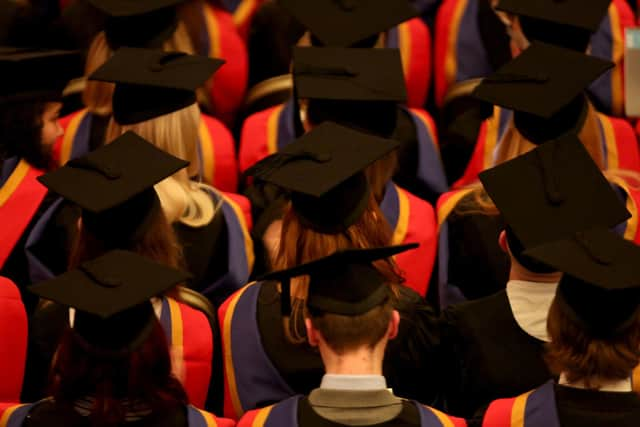Poorest children in Doncaster far less likely to progress to higher education
and live on Freeview channel 276
Education charities have called for more to be done to help children from disadvantaged backgrounds attend university, with the gap in higher education attendance at its highest ever level.
New figures from the Department for Education show – for the 2021 to 2022 school year – 19.4 per cent of children in Doncaster receiving free school meals aged 15 were in higher education at 19.
Advertisement
Hide AdAdvertisement
Hide AdBy comparison, this figure was 39.5 per cent among their peers.


Across England, more children on free school meals are going on to universities and other institutions – but the number has been increasing at a slower rate than for their peers.
As a result, the gap in higher education enrolment is at its highest level on record – at 20.2 per cent.
The Fair Education Alliance – a group of organisations looking to improve how young people are educated – said it is concerned about the hurdles faced by children from disadvantaged backgrounds.
Advertisement
Hide AdAdvertisement
Hide AdJaneen Hayat, the alliance's director of collective action, said: "We know university is one of the key ways young people from poorer backgrounds can increase their chances of employment.
"We also know that the growing inequality we see in university admissions starts much earlier in education, with the attainment gaps at the end of primary and secondary school each at their highest point in over a decade."
She further cautioned the gap in educational outcomes starts earlier in life – and while widening access was university is important, work needs to be done to prevent academic disparities early on.
Despite a small increase in attendance among the least well off, a significant gap also exists when it comes to "high-tariff" higher education providers – those that require the best grades to attend.
Advertisement
Hide AdAdvertisement
Hide AdAcross England, most children are almost three times as likely to enrol in a top institution as those who have previously received free school meals.
In Doncaster, 3.3 per cent of the most disadvantaged children were attending a "high tariff" provider aged 19 – compared to 9.6 per cent for the rest of their cohort.
Comment Guidelines
National World encourages reader discussion on our stories. User feedback, insights and back-and-forth exchanges add a rich layer of context to reporting. Please review our Community Guidelines before commenting.